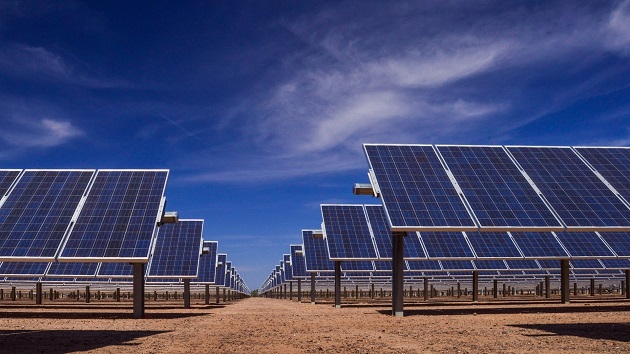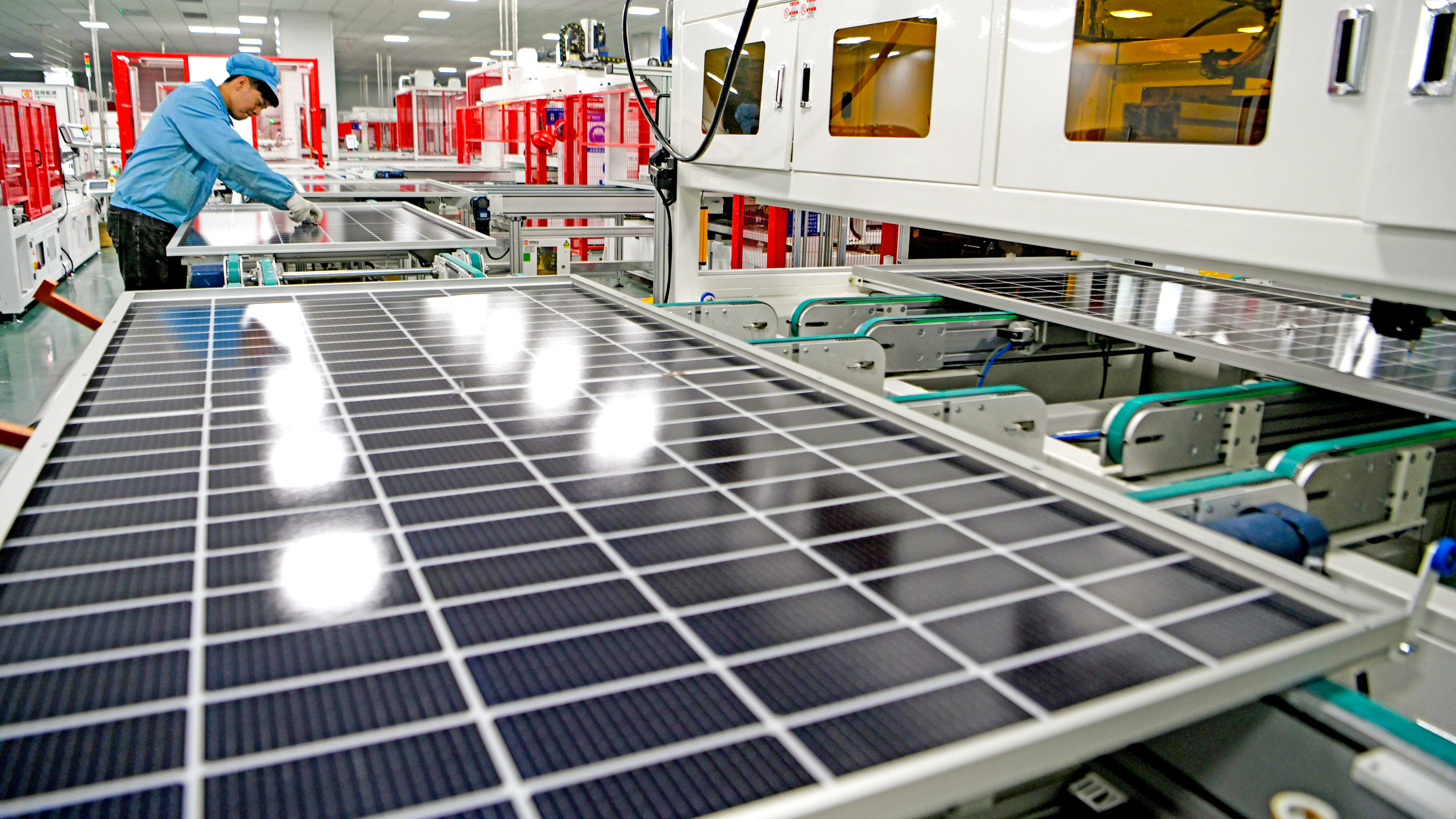Some Known Details About Commercial Solar Panels Virginia
Some Known Details About Commercial Solar Panels Virginia
Blog Article
Virginia Solar Panel Tax Credit: Lumina Solar Focuses On Providing Advanced Photovoltaic Solutions For Houses And Services
History and Establishing
Have you ever questioned how a solar panel business springs from a mere spark of motivation into a powerhouse of renewable resource? It often begins with a vision-- one fueled by a blend of development, decision, and a pinch of serendipity. The journey of many solar companies mirrors the advancement of the innovation itself: from large, inefficient panels to smooth, high-efficiency marvels utilizing the sun's bounty.
The Early Days
In the late 20th century, when solar power was still a specific niche concept, leaders planted seeds for what would end up being a worldwide motion. Think of a little workshop filled with curious engineers, relentlessly explore photovoltaic cells. Their enthusiasm was palpable, frequently driven by a desire to combat environment modification and lower dependence on nonrenewable fuel sources.
One such anecdote is about a founder who, influenced by a camping journey, understood that even in remote areas, the sun might power vital devices. This basic observation stimulated a company's mission to equalize access to tidy energy.
Establishing Principles

- Innovation: Continually pressing the boundaries of solar technology to improve performance and resilience.
- Sustainability: Dedicating to environmentally friendly production and decreasing carbon footprints.
- Ease of access: Making sustainable energy solutions budget friendly and useful for everyday users.
Turning points in Development
| Year | Secret Occasion |
|---|---|
| 1985 | Business founded in a small garage, concentrating on research study and advancement. |
| 1995 | Business solar panel item introduced, gaining regional attention. |
| 2005 | Broadened to worldwide markets, welcoming global sustainable energy goals. |
| 2015 | Introduced cutting-edge solar panel innovation with enhanced energy conversion. |
Isn't it remarkable how these incremental steps, typically neglected, form the energy landscape today? The photovoltaic panel business story is not just about innovation; it has to do with an unrelenting quest for a brighter, cleaner future.

Innovations in Solar Panel Technologies
Ever discovered how some photovoltaic panels gleam brighter and last longer? It's not magic; it's the science of photovoltaic performance. Modern solar panel companies invest heavily in innovations like bifacial cells, which record sunshine from both sides, enhancing energy harvest without broadening roofing system area. Have you ever wondered why some panels perform much better on cloudy days? That is because of advances in thin-film solar technology, which flourishes under diffused light conditions.
Product Variations Tailored to Unique Requirements
One size never fits all. Solar panel suppliers now offer:
- Monocrystalline panels for maximum performance and smooth looks, suitable for space-constrained rooftops.
- Polycrystalline panels, which provide an affordable option without sacrificing excessive output.
- Building-integrated photovoltaics (BIPV), merging solar tech flawlessly into architectural elements like windows and facades.
Selecting the best item isn't almost in advance cost; it has to do with matching your environment, energy objectives, and long-lasting cost savings. For instance, homes shaded by trees need panels that master low-light scenarios, something many overlook till energy expenses climb up all of a sudden.
Technical Tips for Ideal Selection
- Examine the temperature coefficient-- lower values indicate panels lose less efficiency on hot days.
- Look for panels with enhanced anti-reflective finishings to maximize light absorption.
- Consider the panel's warranty not simply for defects, but for guaranteed power output over decades.
- Do not undervalue the value of the inverter technology coupled with the panels; it can make or break your system's performance.
Beyond Panels: Emerging Trends
Picture here solar panels that change their angle automatically to go after the sun-- tracking systems are becoming more accessible, increasing yield significantly. Or solar tiles that mix undetectably into your roofline, changing your home into a silent, self-dependent power generator. These developments are reshaping what a photovoltaic panel business offers-- not just products, however integrated energy services.
Market Existence and Global Operations
Ever wonder why some solar panel business seem to grow up in every corner of the world while others barely make a ripple? The distinction lies not simply in innovation but in mastering the art of browsing diverse markets. Broadening internationally resembles planting seeds in different climates-- you need to comprehend each environment's special conditions to prosper.
Take, for instance, the complex dance of logistics and supply chain management. Shipping panels halfway across the world isn't practically distance; it's about timing, customs, tariffs, and adapting to local need variations. A business with robust worldwide operations anticipates these variables, guaranteeing panels get here on schedule without inflating costs. This foresight is no small feat and typically separates market leaders from followers.
Secret Techniques for Expanding Market Existence
- Localized manufacturing: Developing production centers near target audience minimizes shipping delays and import complexities.
- Strategic partnerships: Teaming up with regional firms speeds up market penetration and constructs trust.
- Adaptive product design: Customizing photovoltaic panel tech to weather, sun intensity, and infrastructure nuances improves efficiency and approval.
What about the human aspect? Solar panel business operating worldwide should reconcile cultural differences and regulative nuances without losing sight of their core objective. What works in a sun-drenched desert may fail in a damp seaside area. In some cases, the most ingenious solution is merely listening-- soaking up local insights to fine-tune innovation and method.
Professionals frequently encourage a phased rollout rather than a shotgun growth. Why risk overextension when measured development develops sustainable momentum? Scaling carefully suggests balancing aspiration with operational resilience - Residential Solar Panels Virginia. After all, in the race for sustainable energy dominance, perseverance can be as important as speed
Environmental Effect and Sustainability Practices
When solar panels first emerged, many assumed they carried no environmental luggage. Nevertheless, the reality is more nuanced. The production of solar batteries involves unusual earth metals and energy-intensive processes, which can leave a sizable carbon footprint before the panels even reach rooftops. The real ecological cost depends heavily on the sustainability practices used by the photovoltaic panel business throughout the lifecycle of their products.
How often do we pause to consider what occurs to photovoltaic panels at the end of their useful life? Unlike batteries or electronics, solar panels can last 25-30 years, however disposal and recycling pathways remain underdeveloped in numerous regions. A business dedicated to reducing ecological damage will have a robust strategy for recycling photovoltaic products, restoring valuable silicon, glass, and metals to avoid landfill build-up.
Key Sustainability Techniques
- Utilizing low-impact production methods that reduce water and energy intake.
- Executing closed-loop systems to recycle production waste back into brand-new panels.
- Participating in transparent supply chain audits to ensure ethical sourcing of raw products.
- Designing panels for simpler disassembly to help future recycling efforts.
It's worth noting that some solar business have pioneered ingenious approaches, such as incorporating eco-friendly parts or using less harmful chemicals throughout fabrication. This not only reduces environmental stress however likewise sets a precedent for the market. The concern stays: can the solar market really pivot towards a circular economy design without compromising efficiency or affordability?
Specialist Tips for Assessing Sustainability
- Inquire about the business's dedication to carbon-neutral manufacturing and whether they offset emissions.
- Investigate if they partner with certified recycling centers devoted to solar panel waste.
- Try to find transparency reports detailing environmental impacts and sustainability objectives.
- Consider the durability and service warranty of panels as an indirect measure of resource effectiveness.
In the end, opting for solar energy ought to indicate more than simply slashing electricity bills; it has to do with supporting a future where energy is gathered responsibly and waste is thoughtfully handled. Solar panel business that accept this approach not only light up homes however also cast a brighter light on sustainable innovation.
Report this page